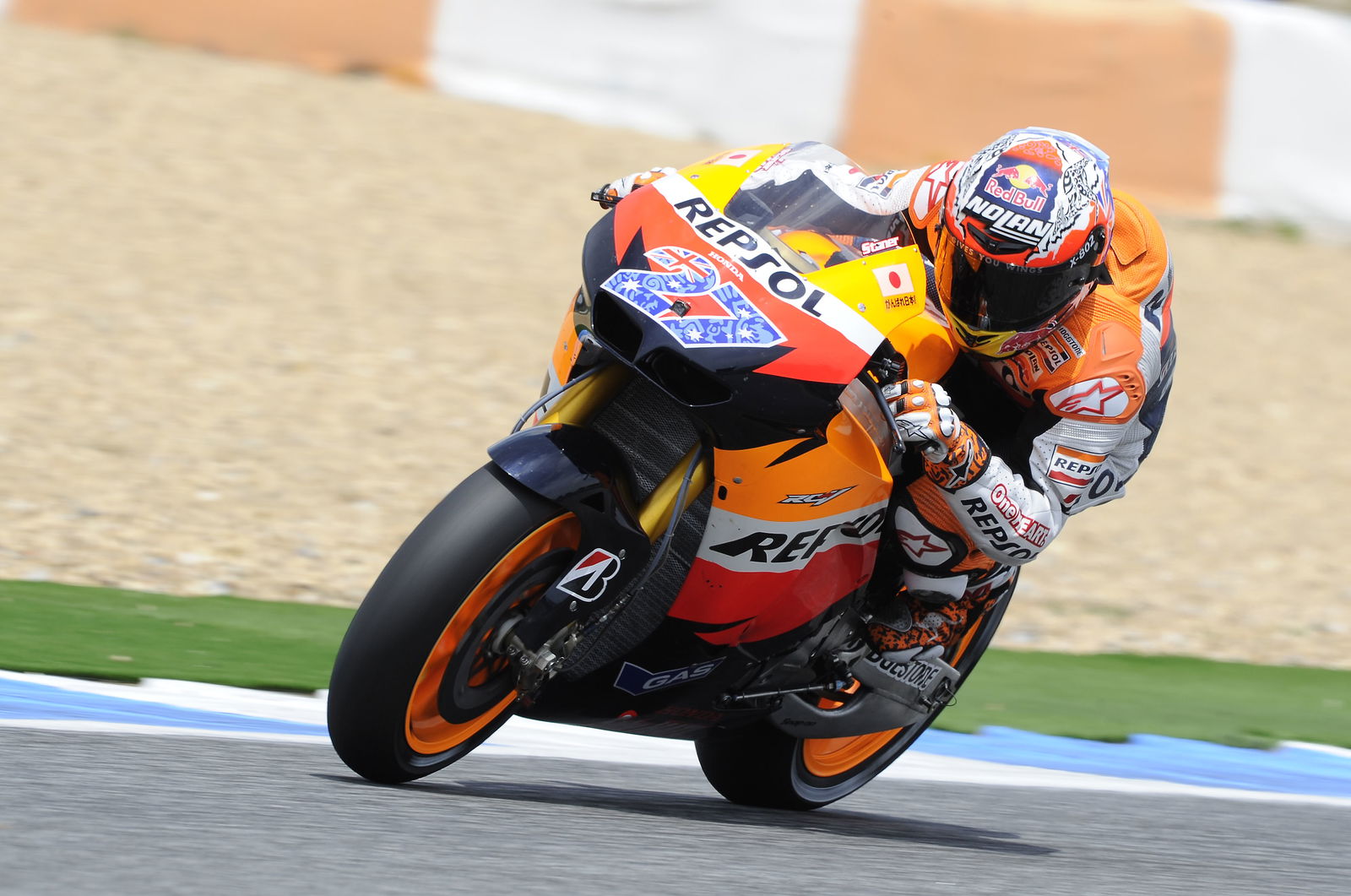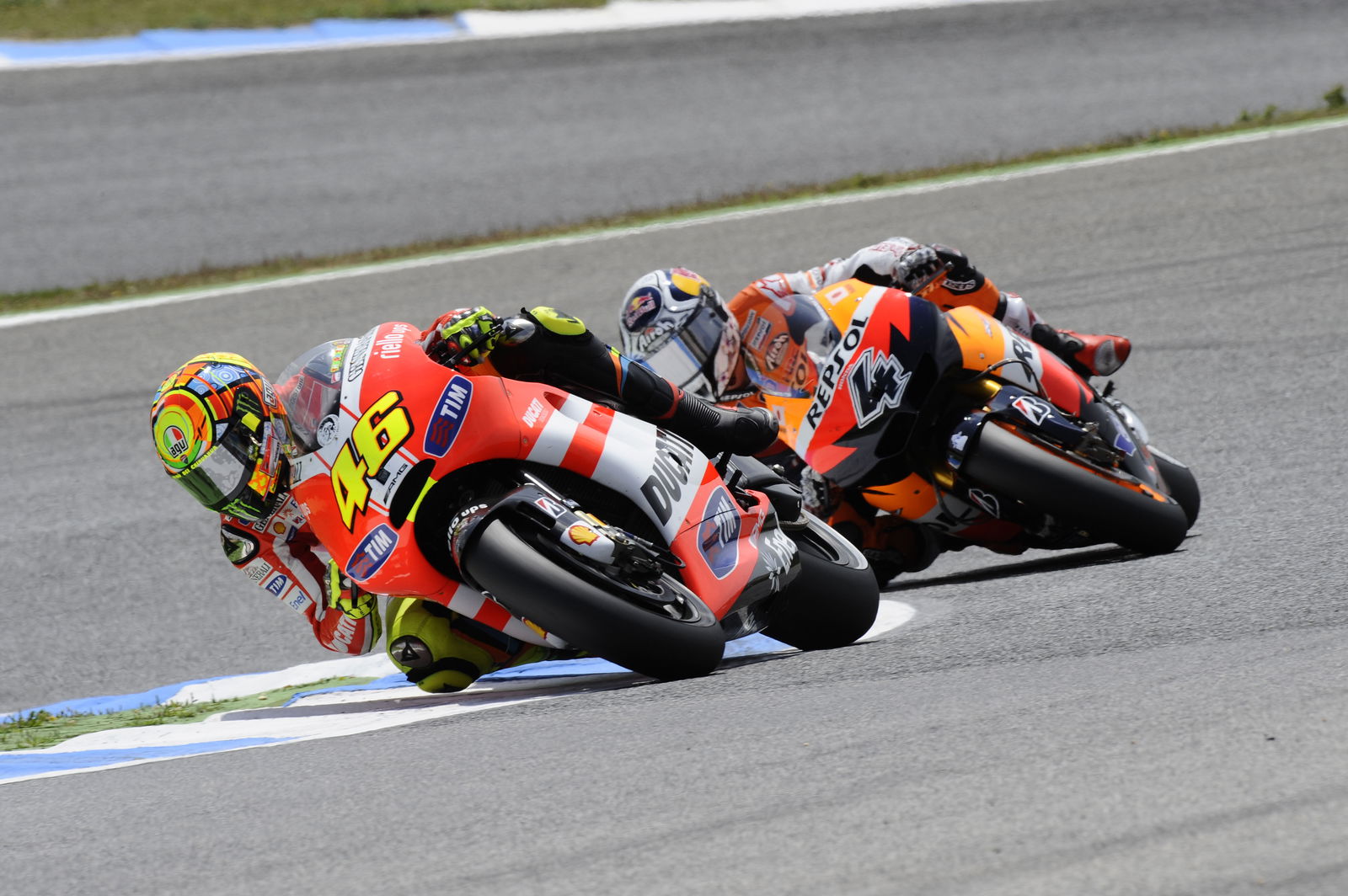CRT rules explained

An FIM announcement during last weekend's Portuguese Grand Prix gave further details on how the new-for-2012 MotoGP 'Claiming Rule Teams' will be governed.
The Claiming Rule Teams (CRTs) are a new initiative to help boost privateer entries in the MotoGP class, and coincides with the start of the new 1000cc engine rules.
The CRTs will compete alongside teams running factory-built prototypes - which currently comprise the entire 17-rider MotoGP grid - but with concessions in terms of fuel-tank capacity and engine changes to give them a fighting chance.
In order to avoid the abuse of such concessions, in other words to stop any undercover factory efforts, CRT status must first be approved by the Grand Prix Commission.
This is how the latest FIM rules, released at Estoril, define a Claiming Rule Team:
"Four stroke motorcycles participating in the MotoGP class must be prototypes. Those that are not entered by a member of MSMA [Manufacturers' Association] must be approved for participation by the Grand Prix Commission, and teams using such motorcycles may ask the Grand Prix Commission (GPC) for the "Claiming Rule Team" (CRT) status by December 31st of the year before the season they intend to race.
"Approval of CRT status is subject to unanimity among all the members of the GPC, and CRT status is given only for one year at a time. The CRT status is approved by unanimous decision of the GPC in order to ensure fair competition, and based on the same consideration it can be withdrawn at any time by a majority decision of the GPC members. In case of CRT status withdrawal the GPC will inform the team at least one race in advance of CRT status being withdrawn.
"The CRT status affects the requirements of engine durability [CRTs can use 12 engines per season instead of 6] and fuel tank capacity [CRTs have a fuel tank limit of 24 litres instead of 21].
"CRT's are subject to the Claiming Rule and must not represent any MSMA manufacturer, as defined solely by a GPC majority decision."
That brings us to the 'Claiming Rule' itself. This is basically an attempt to further limit costs by forcing teams to allow rivals to buy their engine(s), should they wish to do so.
The theory is that no-one will use expensive or secretive technology if a rival can literally get their hands on it. Teams wishing to avoid having their engines 'claimed' will need to race under 'normal' status.
Claiming Rules have been used in other forms of racing, although in the case of MotoGP there is a slight twist in that the 'claiming' won't be done by the teams, but the MSMA manufacturers.
The FIM rules state:
"MSMA manufacturers have the right to purchase the engine of a motorcycle entered by a CRT immediately after a race, for a fixed price of:
"20,000EUR (twenty thousands Euros) including gearbox/transmission, or
"15,000EUR (fifteen thousands Euros) without gearbox/transmission.
"A maximum of four engine claims can be made against one CRT in any one racing season. An MSMA manufacturer may not claim more than one engine per year from the same CRT (i.e. a different claimant for every claimed engine of the same CRT)."
Once a claim is lodged, and to ensure that the engine 'bought' is the real deal and not a toned-down version, the following procedure will take place:
"To lodge a claim under the Claiming Rule, an MSMA manufacturer must inform Race Direction in writing after the start of the race. In the case of more than one claim lodged against the same team, the claim lodged first will be recognised, and other claims dismissed.
"Provided that the relevant CRT has not already been subjected to the Claiming Rule four times that season, Race Direction will request the Technical Director to securely identify the used engine immediately after the race.
"The CRT must make that engine available at Technical Control within two hours after the identification, to be handed over to the successful claimant by the Technical Director. Race Direction will inform IRTA of the successful claim, and IRTA will ensure payment and receipt of the claiming fees between the two involved Teams."
The ability to 'claim' engines obviously clashes with the MotoGP engine-change limits mentioned previously [12 per season for a CRT]. Therefore...
"If a CRT loses an engine due to [the Claiming Rule], an additional engine will be allowed in the affected rider's allocation," read the FIM rules.
"The number of engines available for use by each rider using a machine entered by a CRT can be changed during the season by a majority decision of the GPC, with the aim of ensuring fair competition.
"The number of engines allowed after that point will be determined by the GPC, based on half the number of engines remaining in the CRT's allocation, numbers rounded up. (eg. 9 engines remaining /2 = 4.5, rounded up = 5 engines allowed)."
So far, the new rules look to have hit their mark, with 16 new teams - meaning teams not presently racing in MotoGP - having registered an interest in being part of the 2012 world championship.
14 of those teams - which were not named, but are assumed to be mainly from the Moto2 and 125cc classes - have been selected to go forward to the next stage of assessment.
Existing MotoGP teams do not need to apply.
MotoGP is thought to be aiming for a grid size of around 22-24 full-times riders for 2012.
The BMW-powered Suter 1000cc MotoGP bike, being developed in partnership with the Marc VDS team, is testing at Estoril on Tuesday and Wednesday.


